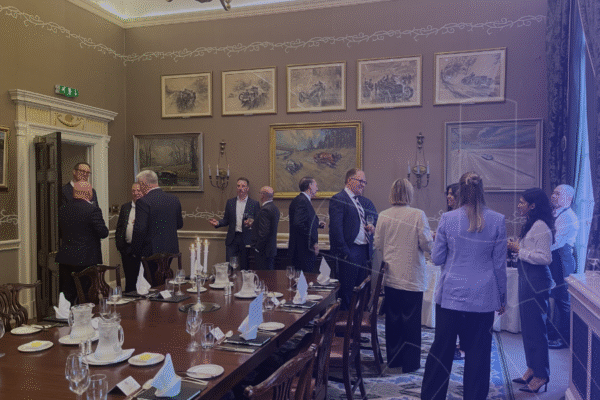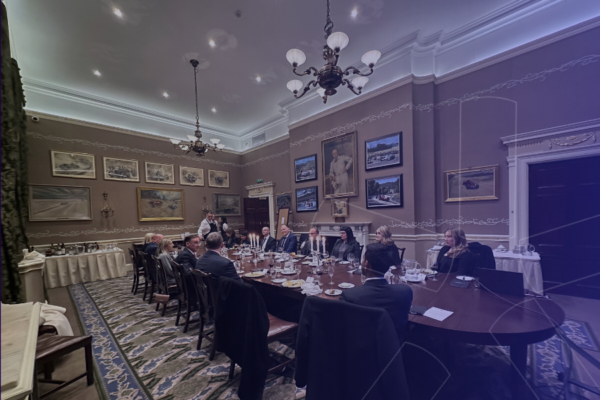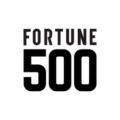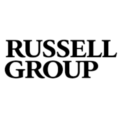Workplace Connect
5 Key Insights from our June London Workplace Connect Roundtable
On June 3rd 2025, we welcomed 20 workplace leaders to London's Royal Automobile Club for another Workplace Connect round table dinner to discuss the future of hybrid work. It was a tough one, but we've narrowed down the takeaways to these 5.

On June 3rd, we brought together 20 workplace leaders at the prestigious Royal Automobile Club in London for an evening of candid conversation about the future of hybrid work. Around the table sat workplace strategists, HR leaders, and real estate professionals, all grappling with the same fundamental question: how do we make the office work in 2025?
Over dinner and drinks, our attendees shared their biggest challenges, debated the effectiveness of return-to-office mandates, and explored what the workplace might look like as AI reshapes how we work. While each organization faces unique circumstances, a few common themes emerged.
Here are the five key insights from June’s London Workplace Connect roundtable.
1. The results of the Great Mandate Experiment aren’t, well…great
The room was unanimous: traditional RTO mandates aren’t delivering the results organizations had hope for. One attendee shared that even companies with strict five-day office mandates are only achieving an average of 3.7 days of actual attendance.
Another attendee noted that while 2021 onwards was all about figuring out how to do hybrid successfully, 2025 is about asking people to come in at roughly 40% of the time. Attendance isn’t enforced, and it’s steadily declined since issuing the guidance.
The challenge isn’t just about compliance, but purpose. Organization can’t police exactly where knowledge work gets done and our attendees agreed that the focus needs to shift from where people work to how productive they are. As one leader put it: “Structure is needed, but mandates aren’t working, so the way we measure productivity has to be stabilized.”
The London perspective: UK employees, particularly in London, expect a significantly better workplace experience by default compared to their US counterparts. This means mandates without meaningful workplace improvements are even less likely to succeed.
2. Data is a workplace leader’s best friend (when you can get it)
Every attendee emphasised the critical role of data in making workplace decisions, but many are struggling with incomplete pictures. One participant highlighted a common challenge: half of the organization using desk booking to sit near colleagues, and the other half just turning up sitting at the first desk available. Usability is the secret to solving this problem.
Data is essential for convincing leadership that mandates aren’t working. Several attendees noted that board members are more receptive to workplace strategy changes when presented with concrete evidence about attendance patterns and space utilization.
Key metric to watch: Attendance patterns by seniority level. Our attendees observed that in many cases, senior leaders are booking large meeting rooms just for themselves, seeking isolation rather than collaboration.
Essential Workplace Metrics: A Practical Tool Kit for Workplace Managers
Why isn't cost per square foot sufficient anymore when we've been using it for decades? What metrics should workplace leaders be adding to the roster? Download this guide to find out.
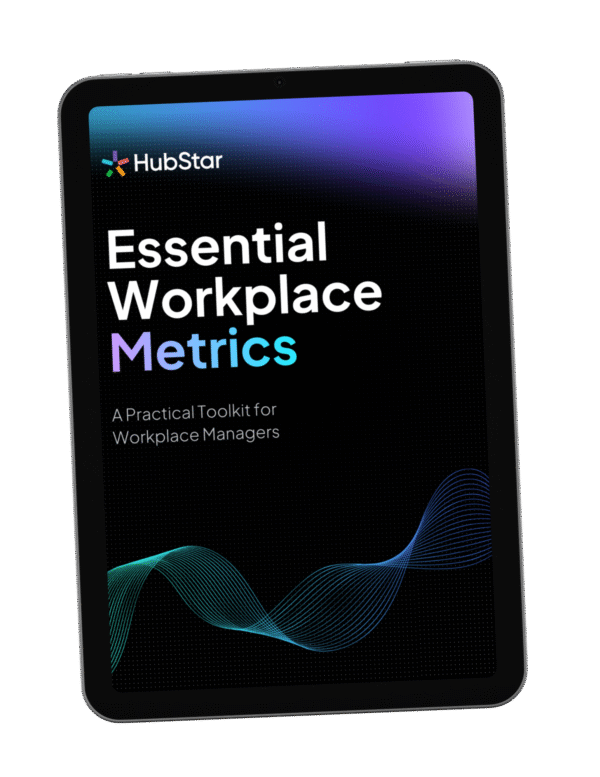
3. The commute cost crisis is still ongoing
Perhaps the most practical barrier to office attendance that emerged from our discussion was the rising cost of commuting and its impact on people’s willingness to come in.
This economic reality is forcing organizations to rethink their value proposition. If employees are spending less time and money on commuting when working from home, they expect that saved time and money to translate into other benefits. The office experience needs to justify not just the time investment, but the financial one too.
4. Middle management is the missing link
One of the most striking insights came from a discussion about generational dynamics in the workplace. Middle managers often don’t want to come in, but they’re the ones training Gen Z, who have rarely worked in the office.
This creates a particularly challenging dynamic: the people responsible for mentoring and developing junior talent are often the most resistant to office attendance. One organization solved this creatively by moving training days to Fridays, making it a “fun” day that eases everyone into the weekend.
The broader implication? Workplace strategies need to account for the different motivations and needs of various career stages, not just apply one-size-fits-all approaches.
5. The role of the office is still in flux
Looking ahead, our attendees agreed that we’re likely witnessing the last generation of an all-human workforce in the office. As AI automates more transactional work, the office’s role will shift toward being primarily a gathering place for relationship building and human connection.
This transformation has immediate implications for space planning. One attendee noted that their organization has sensors on all desks, with only 40% being used during peak times. As AI handles more routine tasks, this utilization pattern will likely shift even further toward collaborative and social spaces.
The real estate reality: The race for high-quality, ESG-compliant buildings near transport hubs is intensifying, with 80% of London office space needing to meet new environmental standards by 2030.
Want to join the next Workplace Connect Round Table?
Our Workplace Connect Round Tables are exclusive sessions where workplace leaders come together to share ideas, tackle challenges, and spark innovation through real conversation. These small-group discussions are a great way to gain fresh perspectives and stay ahead in a rapidly evolving workplace landscape.
Want to be part of the next session? Email jharris@hubstar.com to join the waitlist, we’d love to have you at the table.
Share this post
Read more
